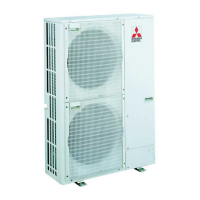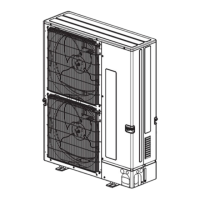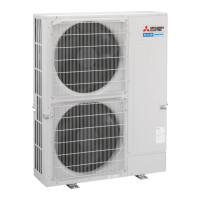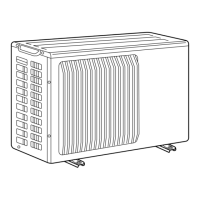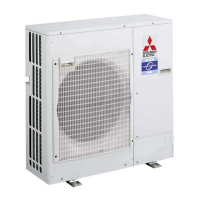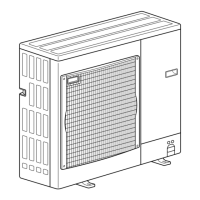SERVICE MANUAL
No. OCH424
REVISED EDITION-E
SPLIT-TYPE, HEAT PUMP AIR CONDITIONERS
R410A
October 2011
Outdoor unit
[Model names]
PUHZ-P200YHA
PUHZ-P250YHA
PUHZ-P200YHA3
PUHZ-P250YHA3
[Service Ref.]
PUHZ-P200YHA
PUHZ-P250YHA
PUHZ-P200YHA3
PUHZ-P200YHA3R1
PUHZ-P200YHA3R2
PUHZ-P200YHA3R3
PUHZ-P250YHA3
PUHZ-P250YHA3R1
PUHZ-P250YHA3R2
PUHZ-P250YHA3R3
PUHZ-P200YHA3R1/R2/R3
PUHZ-P250YHA3R1/R2/R3
Note:
• This manual describes only
service data of the outdoor units.
•
RoHS compliant products have
<G> mark on the spec name plate.
CONTENTS
1. TECHNICAL CHANGES
.................................
2
2. REFERENCE MANUAL
..................................
2
3. SAFETY PRECAUTION
..................................
3
4. FEATURES
......................................................
6
5. SPECIFICATIONS
...........................................
7
6. DATA
...............................................................
8
7. OUTLINES AND DIMENSIONS
....................
10
8. WIRING DIAGRAM
.......................................
12
9. WIRING SPECIFICATIONS
..........................
13
10.
REFRIGERANT SYSTEM DIAGRAM
...............
18
11. TROUBLESHOOTING
...................................
20
12. FUNCTION SETTING
....................................
70
13.
MONITORING THE OPERATION DATA BY THE REMOTE CONTROLLER
....
77
14. EASY MAINTENANCE FUNCTION
..............
87
15. DISASSEMBLY PROCEDURE
.....................
90
PARTS CATALOG (OCB424)
Revision:
•
"11-10 FUNCTION OF SWITCHES,
CONNECTORS AND JUMPERS"
has been modified in REVISED
EDITION-E. (See page 65)
• Some descriptions have been
modified.
• Please void OCH424
REVISED EDITION-D.



